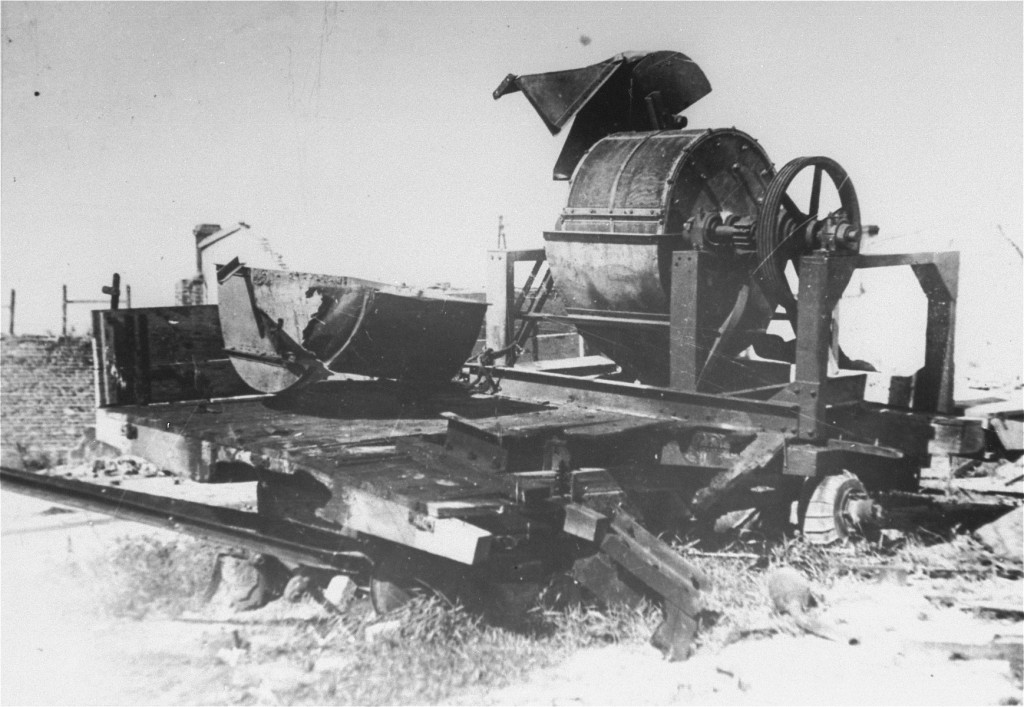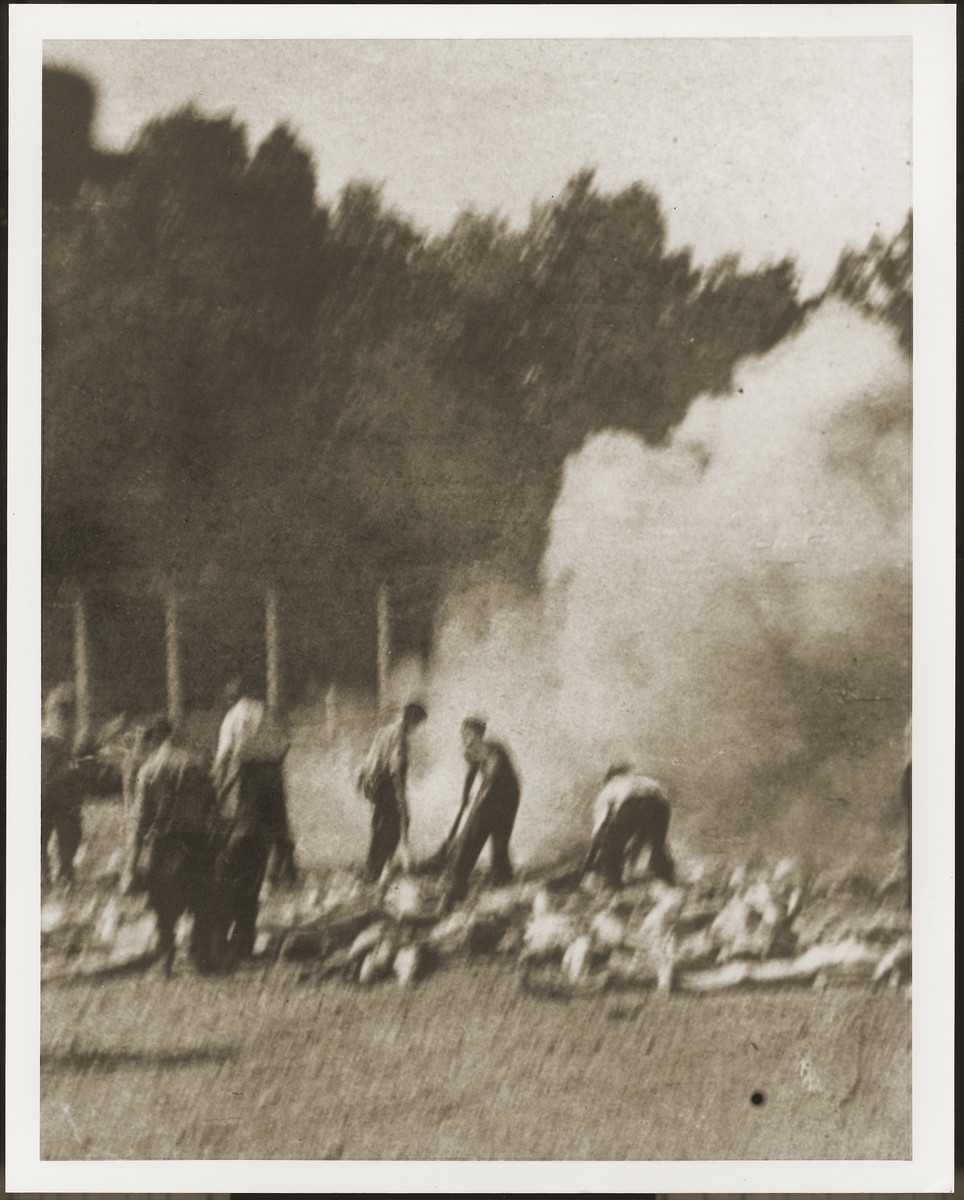
Sonderkommandos
The Sonderkommandos were groups of Jewish prisoners forced to perform a variety of duties in the gas chambers and crematoria of the Nazi camp system. They worked primarily in the Nazi killing centers, such as Auschwitz, but they were also used at other killing sites to dispose of the corpses of victims.
Key Facts
-
1
Sonderkommando is the German word for “special command unit,” and it was used in many different contexts. Jewish Sonderkommando units in the camps should not be confused with the Sonderkommandos which comprised smaller units of Einsatzgruppen killing squads who murdered Jews in mass shootings in the German-occupied Soviet Union and elsewhere
-
2
Jews kept alive for forced labor were ordered to do a wide range of activities for the functioning of the camp and for the war effort and war economy. Those chosen for the Sonderkommandos were forced to participate in many tasks involving prisoners and their bodies before and after their deaths.
-
3
Members of the Sonderkommandos were usually killed after a few months and replaced by new arrivals. There were very few survivors from this group.
Sonderkommandos in the Killing Centers
Although the situation differed among camps, the purpose and daily life of the Sonderkommandos were similar. The routine of the Sonderkommando of the Auschwitz II (Birkenau) killing center is a representative example of the larger phenomenon.
The Jews of this work brigade fulfilled many roles in the gas chamber/crematoria complex, beginning with the arrival of victims. Sonderkommando Jews were present in the undressing area, instructing arriving victims to undress and how to arrange their clothing, which would later be confiscated by the SS.

After the gassing was carried out by camp personnel, men of the Sonderkommando entered the gas chamber, untangled bodies, and cleaned the by then ventilated room. An elevator then raised the bodies to the crematorium level. There, another group would shave the hair of the victims and search the bodies for hidden valuables, including gold teeth, which were removed and handed over to the SS. Finally, the Sonderkommando Jews would carry out the burning of bodies in the ovens and the disposal of the ashes.
In camps like Belzec, Sobibor, and Treblinka, which lacked the more complex machinery of Auschwitz, Sonderkommando prisoners still fulfilled many of the same tasks. Further, to destroy the evidence of mass murder, Sonderkommando were forced to exhume the bodies from burial pits and burn them. The use of the Sonderkommando thus relieved SS personnel from the more disturbing tasks associated with mass murder.
Work in the Sonderkommando was physically exhausting and psychologically destructive. These prisoners were forbidden from warning the incoming victims of their fate and were forced to participate in the process of killing. The prisoners' days were numbered. Members of the Sonderkommando were routinely shot. Of all the prisoners in the camp, they knew the most about the Nazi "Final Solution" and could not be permitted to survive to testify. They were usually kept completely apart from the rest of the prisoners, either in the gas chamber complex itself or in separate barracks.
Resistance
The men forced to do the horrific work of the Sonderkommandos did not do so without resistance. Thanks to one commando worker, Greek prisoner Alberto Errara, four photos from Auschwitz documenting the Sonderkommando in action survived the war. These images, smuggled out by the Polish resistance, are some of the few photographs which are known to depict events near the gas chambers at Auschwitz-Birkenau.
Furthermore, Sonderkommandos participated in armed revolts. One example was at Auschwitz in October 1944. At Auschwitz, the Sonderkommando in all four main crematoria revolted. Crematorium IV was destroyed, and Sonderkommando members from Crematorium III managed to escape briefly. Some 250 prisoners died fighting and a further 200 were murdered in the revolt's aftermath. Three SS men were killed, while around ten were injured.
Other Sonderkommandos
Killing centers were not the only locations where Sonderkommandos were used.

In May 1942, under Sonderaktion 1005 (Special Action 1005), the SS was tasked with excavating and destroying evidence of Nazi mass murder throughout the German-occupied east. SS functionary Paul Blobel, who had previously led Einsatzgruppe C in such mass shootings as the Babi Yar massacre, headed this Special Action. The Special Action officially began at the Sobibor killing center and continued until 1944. Sonderkommandos made up of Jewish prisoners and Soviet prisoners of war were forced to unearth and burn the bodies of Jews and other victims who had been shot or murdered earlier in the war. The project was carried out at other killing centers, including the other Operation Reinhard camps Belzec and Treblinka, as well as at Chelmno.
Auschwitz had onsite crematoria, so the grisly services of Sonderkommando 1005 were not needed there. The operation also returned to the scenes of earlier Einsatzgruppen killings, including the scenes of major massacre sites, such as Babyn Yar (Babi Yar), Ponary, and the Ninth Fort. At the latter two sites, both in Lithuania, prisoners of Sonderkommando 1005 revolted, as they did at the Janowska (Lemburg) camp in German-occupied Poland.
Summary
The Sonderkommandos were forced to perform tasks of unimaginable horror and brutality. Usually, they were aware that they would be murdered after a few months of work. Those who made the difficult decision to resist or refuse to follow orders risked immediate death. They faced horrific circumstances and dilemmas that have been the subject of study by scholars and filmmakers.
Critical Thinking Questions
Why did the SS murder the Sonderkommandos every few months and train a new group?
How does learning about the Sonderkommandos underline the systematic nature of the "Final Solution"?
Why is it difficult to judge the choices of individuals in the Sonderkommandos? As with all persons, in the Holocaust or an event of extreme brutality, consider the pressures and motivations which may have affected any choices they may have had.

